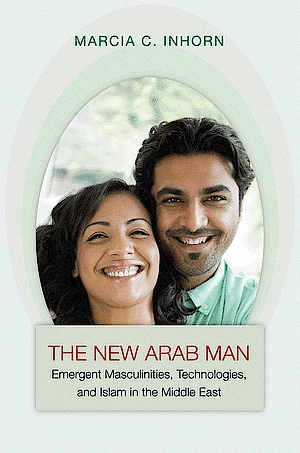The new Arab man
Emergent masculinities, technologies, and Islam in the Middle East
—
Marcia C. Inhorn, The New Arab Man: Emergent Masculinities, Technologies, and Islam in the Middle East. Princeton and Oxford: Princeton University Press, 2012. Paperback, 404 pp., $37.50/£26.95. ISBN 978-0-691-14889-2.
The New Arab Man pinpoints the transformations taking place in men’s lives that Marcia Inhorn has observed over two decades of research into childlessness and infertility in the Middle East. Inhorn’s discussion of male infertility and the expanding market for intracytoplasmic sperm injection (ICSI) – a variant of in vitro fertilisation (IVF) developed to overcome male infertility problems – takes us on a complex journey through men’s marital, reproductive, and religious lives as they participate in treatment for infertility.
Male infertility, described as a neglected reproductive health problem, has a high prevalence in the Middle East where around 60–90 percent of infertility cases presenting to IVF centres involve a diagnosis of male infertility. Inhorn’s book testifies to the effort to make this condition visible, an effort that helps lift some of the burden of reproductive failure from women and recognises the plight of infertile men. Many of Inhorn’s participants do not realise they share this traumatic problem with others. Yet the scope of this book is greater as her portrayal of the love, affection, sacrifice, and suffering entailed in men’s struggles to overcome childlessness with their partners aims to disrupt hypermasculine and neo-Orientalist stereotypes that dehumanise majority Muslim, Arab men in Western media and popular discourse.
The title, The New Arab Man: Emergent Masculinities, Technologies and Islam in the Middle East, speaks to the book’s broader project to explore shifts in contemporary Middle Eastern manhood. This is a timely account of social change in the personal lives of ordinary Middle Eastern men as the consequences wrought by the Arab Spring of civil uprisings and protest unfold. Given that optimism about political changes in the Middle East quickly gave way to a resurgence of Islamaphobic stereotypes and the fear of ‘rising Islamic fundamentalism’ in the United States, Inhorn’s nuanced, thoughtful, and person-centred analysis of the way Islamic faiths shape men’s subjectivities in heterogeneous fashion, including how men’s reproductive failures both challenge and support religious orthodoxies, increases in importance.
The book is divided into two parts, ‘Emergent Masculinities’ and ‘Islamic Masculinities’, which emphasise marital and kin relationships and religious commitments, respectively. Chapter 1 updates Raewyn Connell’s theory of hegemonic masculinity using Raymond William’s concept of emergence to describe how hegemonic culture may be subject to change. Chapter 2 explores the medicalisation of male infertility, which has helped to normalise the condition as a ‘God-given’ disease. Chapter 3 presents the way in which infertile couples’ love, and their commitment to share reproductive troubles, fosters a market for IVF and ICSI. Chapter 4 unpacks the tangled web of consanguineous connectivity – cousin marriage, pronatalism, and patrilineage – that threatens to mask negative outcomes of the current use of ICSI and may perpetuate severe male infertility and other genetic disorders. Inhorn sensitively portrays the suffering related to pregnancy loss and infant death while debating the ethics of ICSI in the absence of genetic counselling.
Part II expertly draws together men’s lived experiences of assisted reproduction and faith (both Islamic and minority Christian) taking the reader through the issues surrounding masturbation for semen collection (chapter 5), explaining fatwas on assisted reproduction and Sunni and Shia Islamic approaches to gamete donation (chapter 6), and detailing attitudes to sperm donation (chapter 7) and egg donation (chapter 8). The book’s structure illuminates the issues surrounding the spread and use of ICSI and builds a cumulative picture of transformations in men’s intimate lives. Inhorn’s clear prose and ability to synthesise multiple facets of Middle Eastern society make the book well suited to courses in medical anthropology, bioethics, religion, and science and technology, gender/masculinity, and Middle Eastern studies.
Moving stories and findings from Inhorn’s substantive ethnography of Lebanese IVF clinics are interwoven with those of fieldwork projects in Egypt, the United Arab Emirates, and ‘Arab’ Michigan (USA). As a regional ethnography it ably charts the particularities of people and place and their interconnections. This is important as the men, the medical technologies, and their moral-religious interpretations move. For instance, couples seek cross-border reproductive care, and a Shia fatwa issued in Iran opens the door to IVF/ICSI and egg donation in Lebanon. The book answers calls for global anthropological studies of reproduction with depth and detail. Significantly, this grasp of regional complexity validates what could otherwise have been construed as over-reaching generalisations about the ‘New Arab Man’ with which the book concludes.
